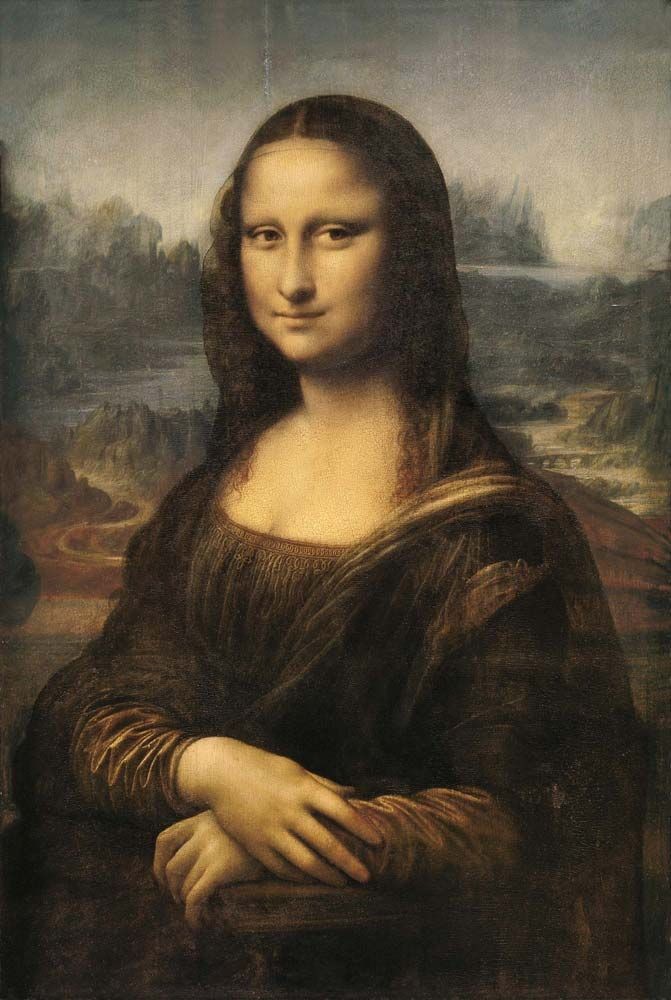Five centuries after Leonardo da Vinci completed the Mona Lisa (circa 1503-1519), this enigmatic portrait continues to captivate millions. Housed securely behind bulletproof glass in the Louvre Museum, it draws throngs of visitors daily, all eager to catch a glimpse of the world’s most famous painting. Yet, upon closer inspection, many viewers might find themselves wondering: why is the Mona Lisa so famous? Is it merely the mystique, or are there deeper reasons for its unparalleled renown? The painting itself is a relatively small and subtly rendered depiction of a woman in modest attire, devoid of extravagant jewelry. While her smile and gaze are frequently discussed, the source of its overwhelming fame remains a subject of intense curiosity and debate. While numerous theories attempt to pinpoint a singular cause for the artwork’s celebrity, the most convincing arguments suggest that its fame is a complex tapestry woven from chance, circumstance, and the painting’s undeniable artistic allure. The Mona Lisa‘s enduring appeal is a fascinating case study in art history and cultural phenomenon.
The Intrinsic Artistic Merit of the Mona Lisa
Undeniably, the Mona Lisa is a painting of exceptional quality. Even during its creation, Leonardo’s contemporaries recognized its brilliance, evidenced by their imitation of his innovative three-quarter pose. Giorgio Vasari, the renowned art historian, lauded Leonardo’s exceptional ability to capture the essence of nature in his art. The Mona Lisa stands as a testament to realistic portraiture. The subject’s gently sculpted face exemplifies Leonardo’s mastery of sfumato, a sophisticated artistic technique employing delicate gradations of light and shadow to create form. This technique reveals his profound understanding of human anatomy, particularly the skull beneath the skin. Details such as the finely painted veil, the intricately rendered tresses, and the meticulous depiction of folded fabric highlight Leonardo’s keen observation skills and extraordinary patience. Moreover, the sitter’s steady gaze and subtle smile, though not considered mysterious until the 19th century, now captivate viewers with their ambiguous expression. Leonardo crafted a complex and compelling figure, mirroring the intricacies of human nature itself.
The Louvre’s Prestige and Royal History
However, many art scholars argue that the inherent artistic quality alone is insufficient to explain the Mona Lisa‘s extraordinary fame. Countless masterpieces exist, yet few attain such global recognition. External factors have significantly amplified the artwork’s celebrity. The painting’s residence in the Louvre Museum, one of the world’s most frequented museums, is undeniably a crucial element in its fame. Its journey to the Louvre began with Francis I, the King of France, in whose court Leonardo spent his final years. The portrait became part of the French royal collection and remained within royal palaces for centuries until the French Revolution designated the royal collection as public property. After a brief period in Napoleon Bonaparte’s bedroom, the Mona Lisa was installed in the Louvre Museum at the dawn of the 19th century. As the Louvre’s popularity grew, so did the painting’s visibility and renown, making it accessible to an ever-increasing audience.
The Enduring Mystery of the Sitter’s Identity
The enigma surrounding the identity of the Mona Lisa subject has further fueled its fame. While many scholars propose that the portrait depicts Lisa Gherardini, the wife of Florentine merchant Francesco del Giocondo, concrete evidence of a commission from Francesco is lacking, and the sitter’s identity remains unconfirmed. This ambiguity has allowed viewers to project their own interpretations and fantasies onto the figure. During the Romantic era of the 19th century, the potential Florentine housewife was reimagined as a mysterious and alluring seductress. French writer Théophile Gautier described her as a “strange being…her gaze promising unknown pleasures,” while others elaborated on her captivating lips and enchanting smile. English author Walter Pater famously characterized her as a vampire, stating she “has been dead many times, and learned the secrets of the grave.” This aura of mystery, cultivated in the 19th century, continues to define the Mona Lisa and inspire endless speculation, enhancing its allure.
The Mythologization of Leonardo da Vinci as a Genius
Concurrently, the 19th century witnessed the mythologization of Leonardo da Vinci as an unparalleled genius. While Leonardo was respected in the centuries following his death, he was not singularly elevated above contemporaries like Michelangelo and Raphael. However, as interest in the Renaissance period surged in the 19th century, Leonardo’s image transformed. He became popularly perceived not only as a masterful painter but also as a visionary scientist and inventor, whose concepts anticipated modern inventions. Although many of his supposed inventions have been debunked, and his scientific and architectural contributions are now considered modest, the myth of Leonardo as a universal genius persisted into the 21st century. This amplified legendary status of Leonardo has undoubtedly contributed to the Mona Lisa‘s fame, associating the artwork with unparalleled brilliance and ingenuity.
The 1911 Theft and Global Media Frenzy
The 19th-century romantic interpretations and Leonardo’s rising mythical status ignited interest in the Mona Lisa, but the painting’s theft in 1911 propelled it to global superstardom. News of the audacious crime on August 22, 1911, triggered an immediate worldwide sensation. Crowds flocked to the Louvre to witness the empty space where the masterpiece once hung. The museum’s director resigned, newspaper headlines screamed hoax accusations, and even Pablo Picasso was briefly considered a suspect! Two years later, the painting resurfaced in Italy after a Florence art dealer alerted authorities about a man attempting to sell it. The culprit was Vincenzo Peruggia, an Italian immigrant who had briefly worked at the Louvre, installing glass on paintings, including the Mona Lisa. He, along with accomplices, had removed the painting, hidden it overnight, and escaped the next morning. Unable to sell the now highly publicized artwork, Peruggia concealed it in a trunk until his capture. His trial, conviction, and imprisonment further amplified the saga, while the painting’s triumphant return to the Louvre, after a tour across Italy, cemented its status as a national treasure for France. The theft and recovery saga irrevocably amplified the Mona Lisa‘s fame, transforming it into a global news story.
Marcel Duchamp, Andy Warhol, and Pop Culture Iconography
While the 1911 theft significantly boosted the Mona Lisa‘s fame, World War I soon dominated global attention. Some scholars propose that Marcel Duchamp’s playful defacement of a postcard reproduction in 1919 reignited public interest and initiated a trend that solidified the painting as a universally recognized icon. Duchamp challenged the reverence of high art by adding a mustache and beard to the Mona Lisa and inscribing L.H.O.O.Q. (a French pun with vulgar connotations). This act of irreverence sparked controversy, and other artists recognized the attention-grabbing potential of such provocations. Decades later, artists like Andy Warhol adopted and expanded upon this approach. Warhol created numerous screen prints of the Mona Lisa, further embedding it in pop culture. As artists distorted, manipulated, and riffed on reproductions of the Mona Lisa, cartoonists and advertisers further amplified her image. Technological advancements facilitated endless reproductions, both manipulated and faithful, making the sitter’s face universally recognizable, even to those with minimal interest in art. The Mona Lisa transcended the art world to become a ubiquitous image in popular culture.
International Tours and Ever-Increasing Accessibility
A tour of the painting to the United States in 1963 and Japan in 1974 elevated the Mona Lisa to unparalleled celebrity status. Traveling first-class on an ocean liner to the United States, the painting attracted approximately 40,000 daily visitors to the Metropolitan Museum in New York City and the National Gallery of Art in Washington, D.C., during its six-week stay. Similar massive crowds greeted the portrait in Japan a decade later. Furthermore, the increasing affordability of international travel since the late 20th century has enabled more individuals to visit Paris and see the Mona Lisa firsthand at the Louvre. This accessibility contributes to the perpetual crowds surrounding the artwork today. The international tours and increased global travel have solidified the Mona Lisa as a must-see cultural landmark.
Conclusion: A Convergence of Factors
In conclusion, while the Mona Lisa is undoubtedly a remarkable work of art, its global fame is not attributable to a single factor. Instead, it is the culmination of numerous circumstances: its fortunate acquisition by the Louvre, the romantic mythologization of the 19th century, the sensational theft of 1911, its appropriation by pop culture, and its international tours. These factors, interwoven with the painting’s inherent artistic appeal and enduring mystery, have synergistically elevated the Mona Lisa to its unrivaled position as the most famous painting in the world. The answer to why is the Mona Lisa so famous is thus multifaceted and deeply rooted in art history, cultural trends, and a touch of serendipity.

